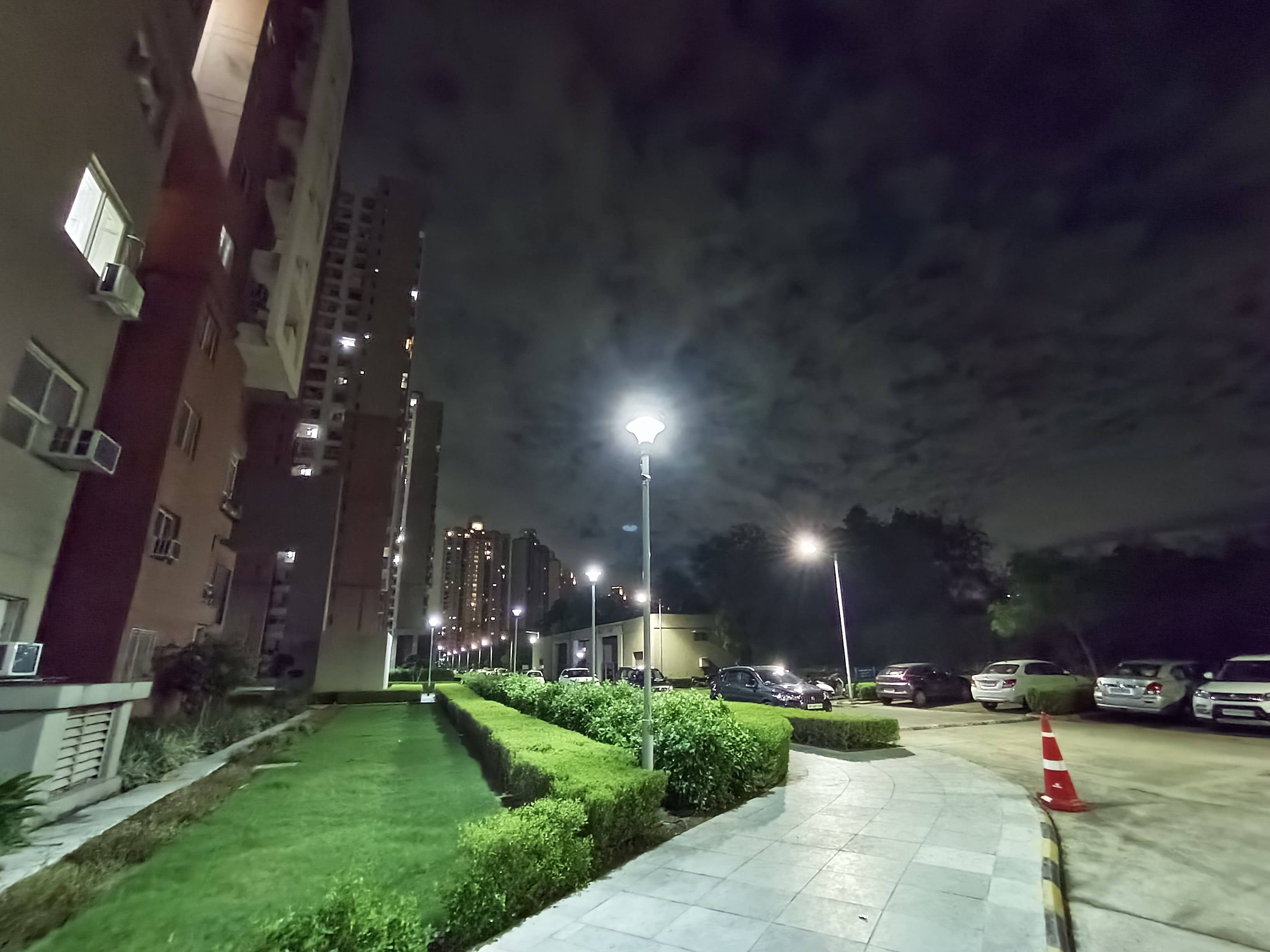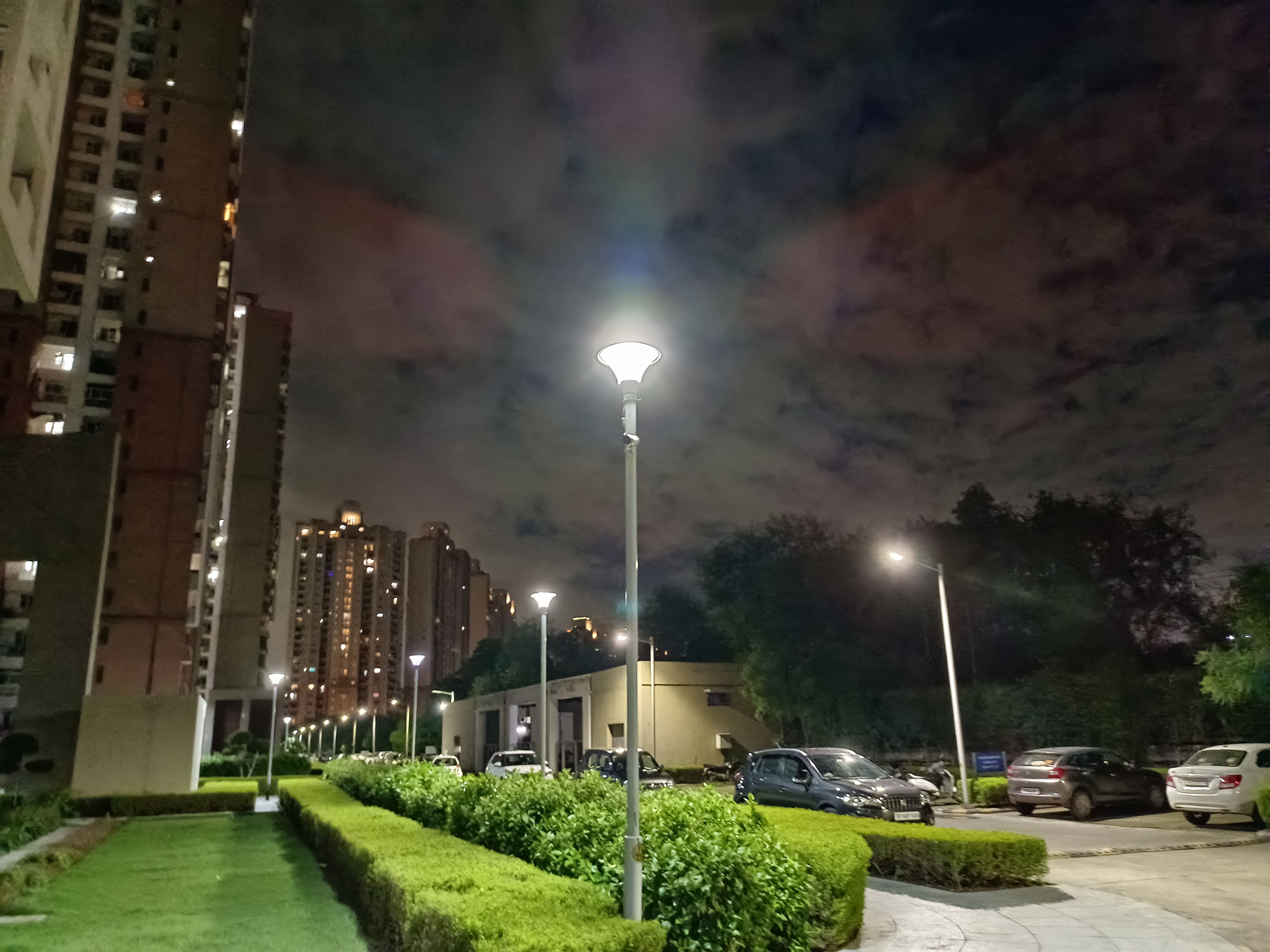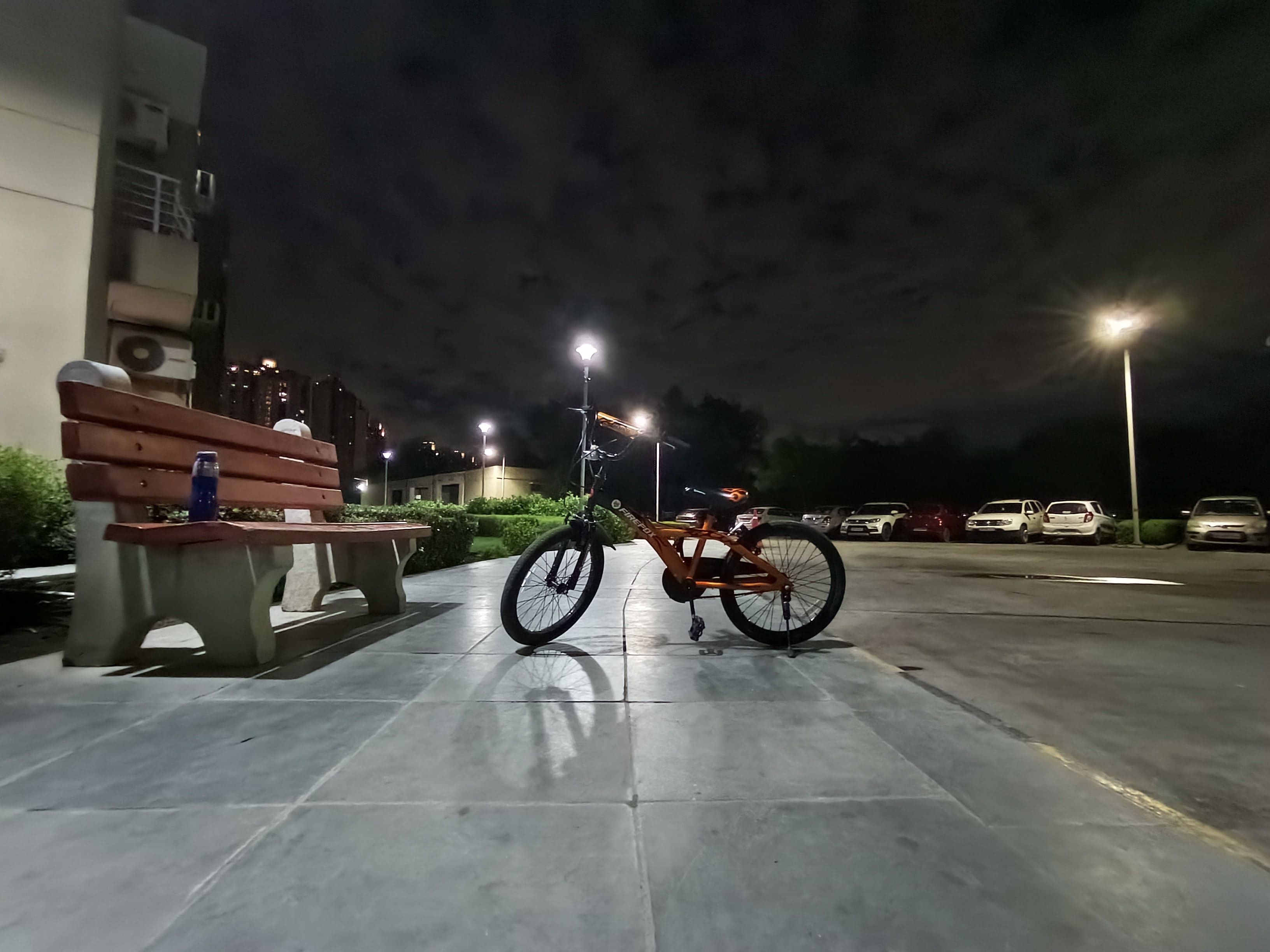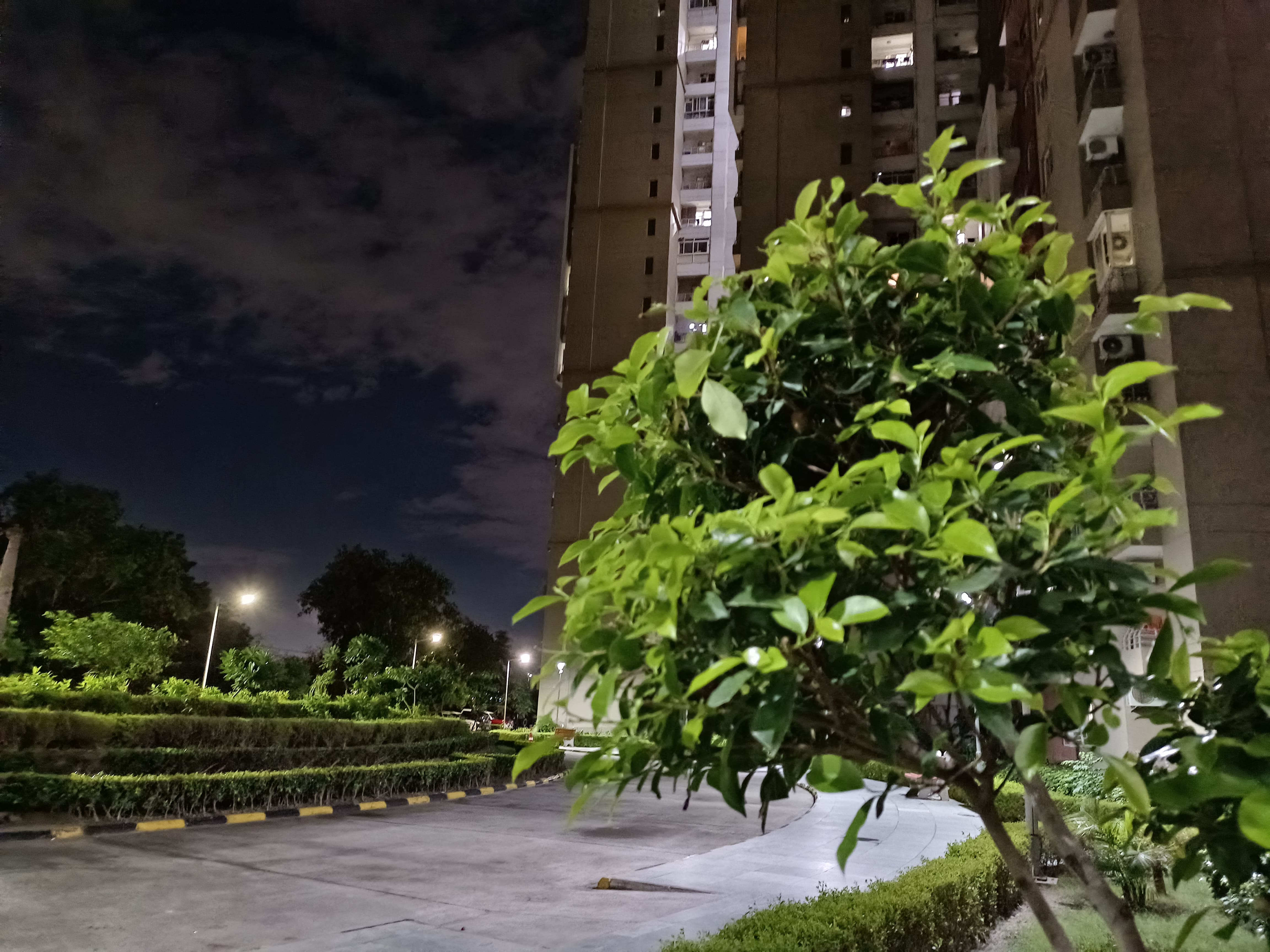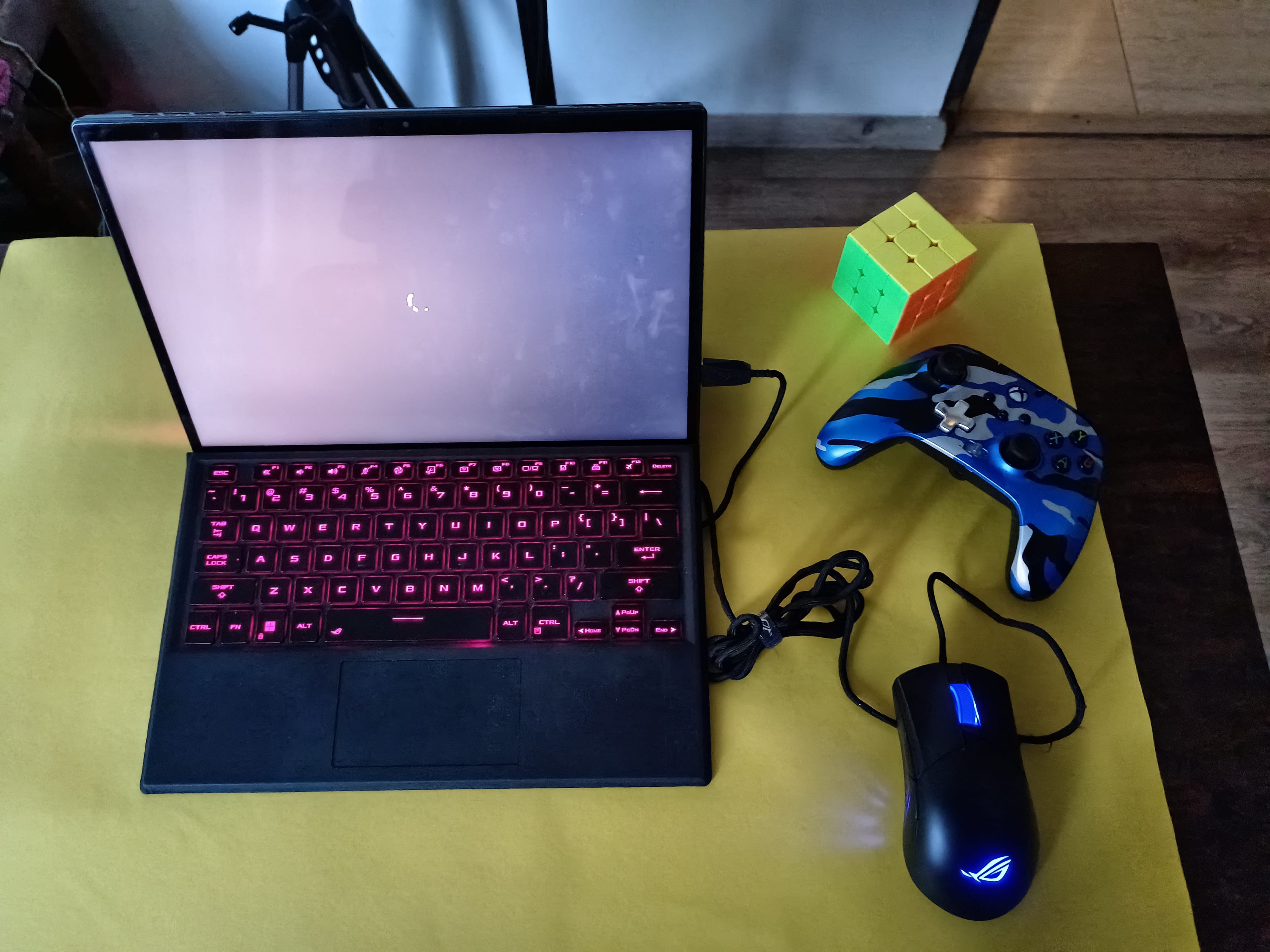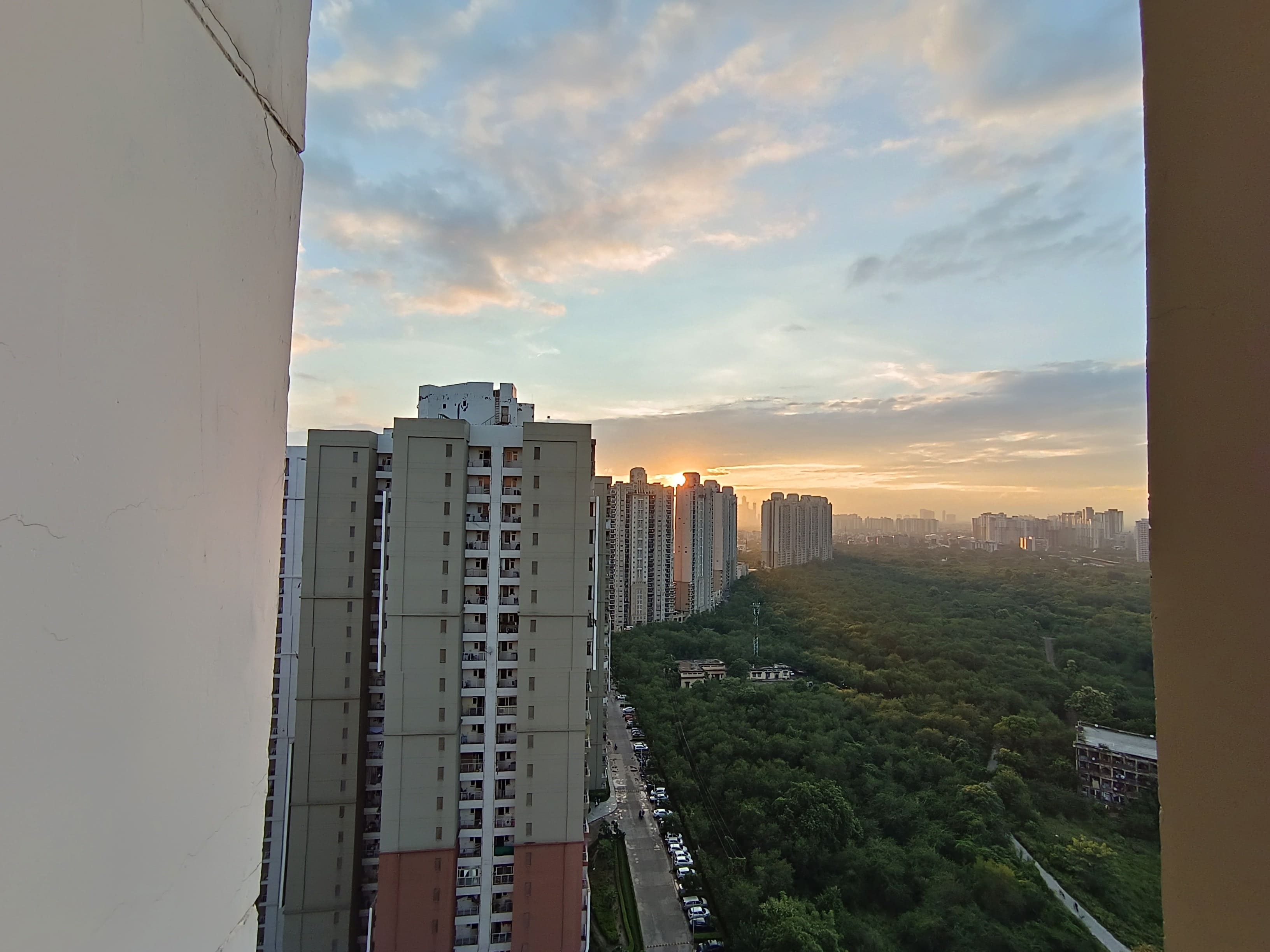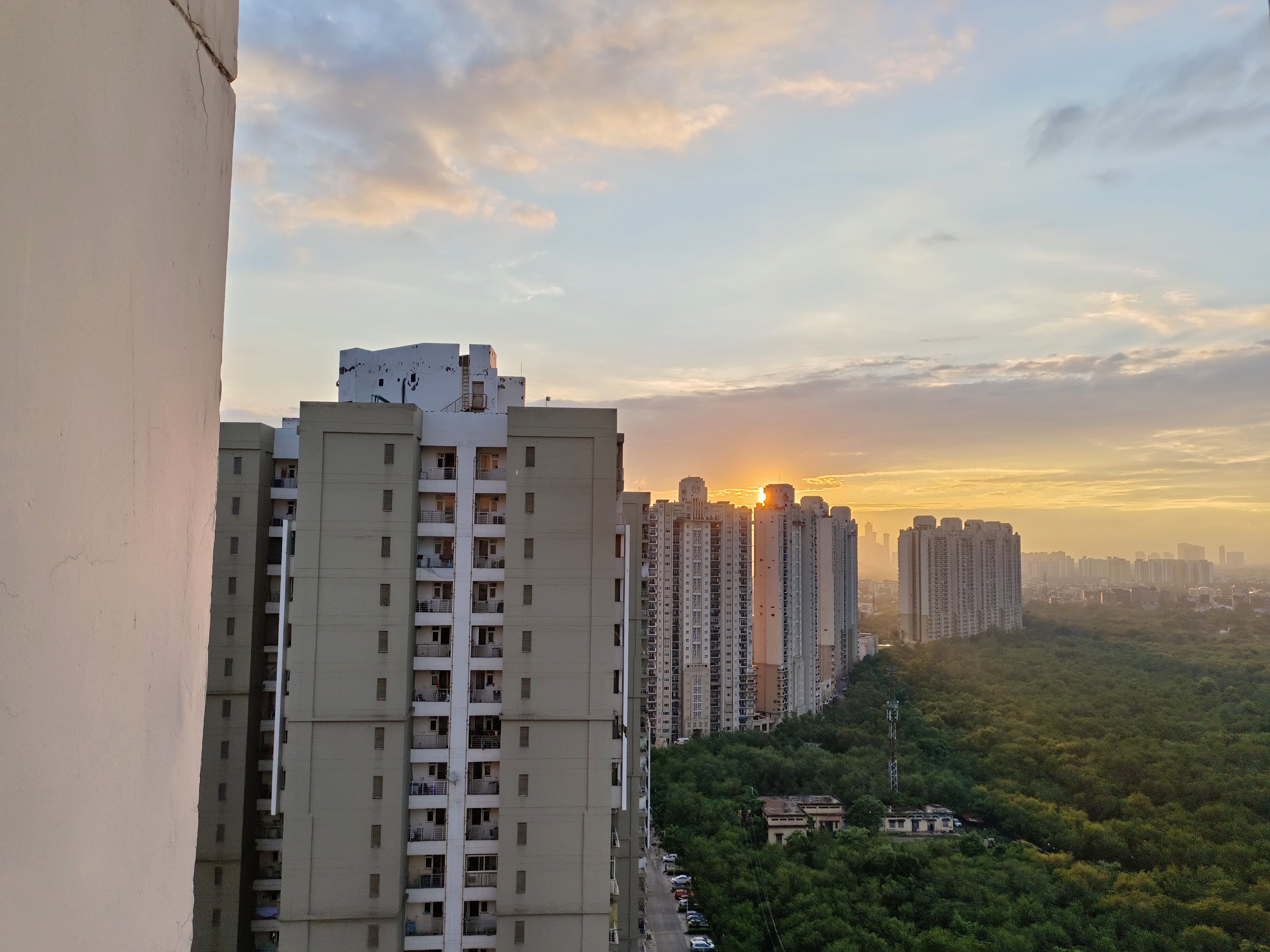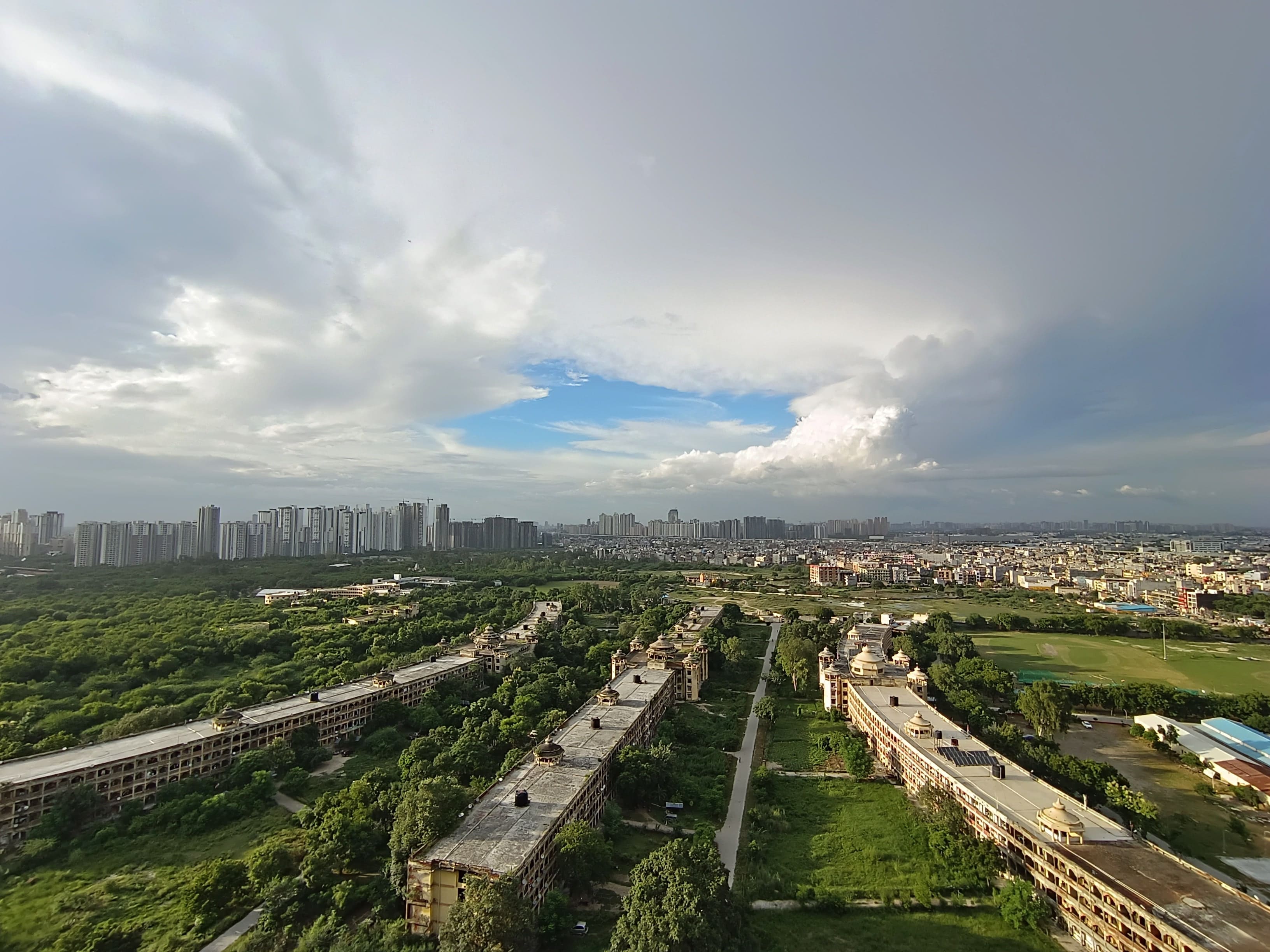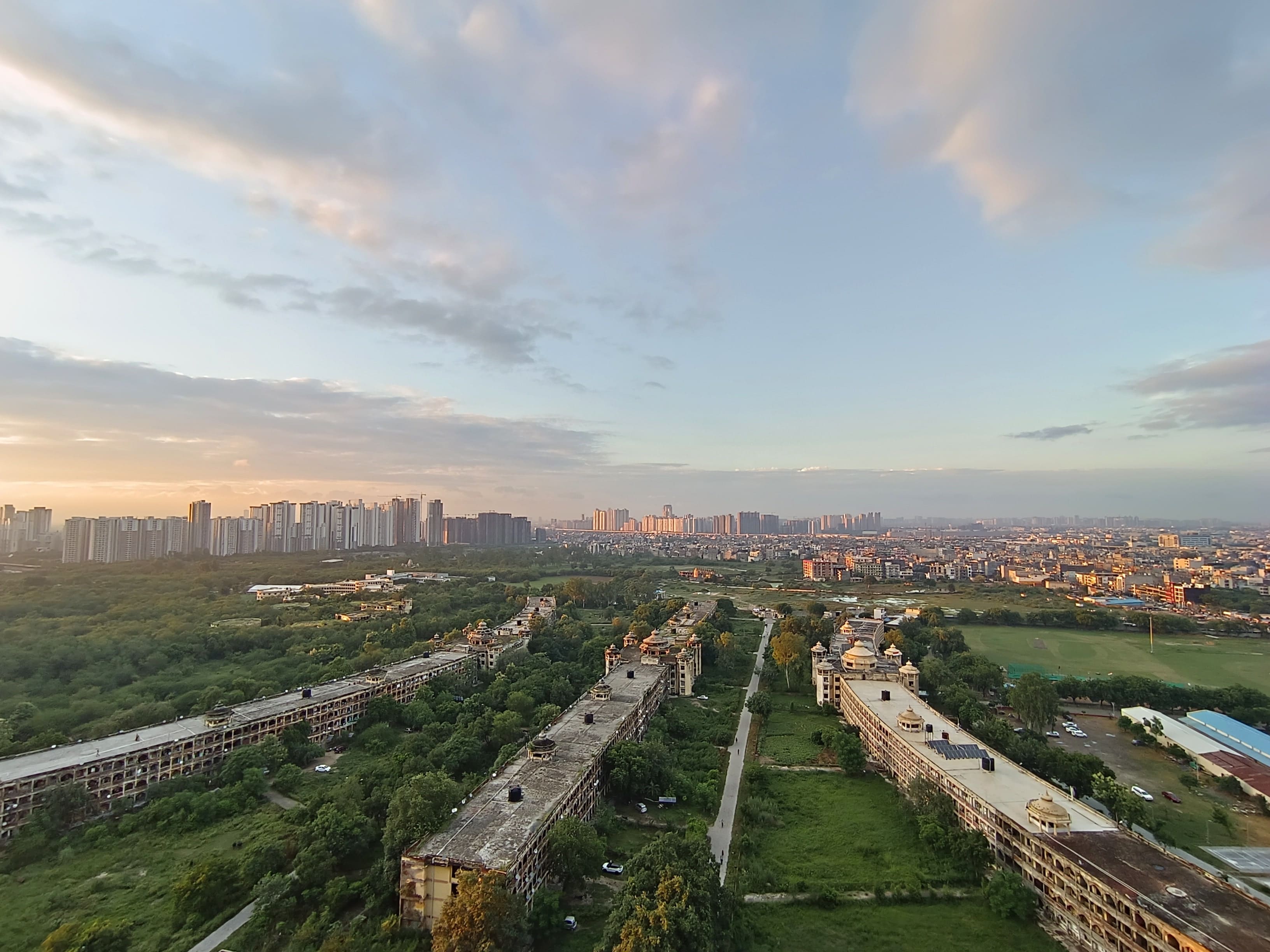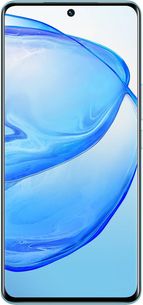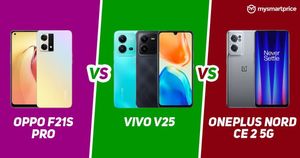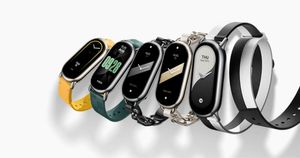
V25 Pro is Vivo’s latest smartphone in the company’s V-series smartphone range in India. There aren’t a lot of smartphones these days that offer curved displays – it’s a thing reserved for high-end smartphones. Some people find it tacky, others love it, but no matter who you are, a glimpse of a curved display in the wild does catch your fancy.
Starting at Rs 35,999, the Vivo V25 Pro is a smartphone that seems to fill that void in the market with a 6.5-inch curved pOLED display, taken straight out of the Vivo X70 Pro. While that’s what we think is the key selling point, Vivo seems to be pushing the photography chops of the smartphone rather seriously. The phone has ‘Professional Photography’ printed on top of its frame.
While this seems to be a breath of fresh air, the segment is actually cluttered with smartphones with some unique USPs. For example, we have the Nothing Phone (1) with shiny LEDs, the Realme GT Neo 3 that’s all about speed, the OnePlus 10R with a clean UI and the iQOO 9 SE focused solely on gaming. Clearly, it’s a well-formed market. But can Vivo’s latest offering be unique enough to take everyone by surprise with no major emphasis on performance? Let’s find out in our review of the Vivo V25 Pro.
Vivo V25 Pro Review: A colour-changing design
At first glance, the Vivo V25 Pro seems like a phone worth a lot more than its asking price simply because of its curved front and rear edges. In addition, the in-hand feel of it is excellent – it’s lightweight, slim, and, more importantly, its aspect ratio is perfectly suited for typing. A few years ago, it would have been a big phone, but now it seems to be a perfect size.
The rear is made out of velvet-textured glass but with a twist. It’s Sailing Blue variant glitters under light, but it also has colour-changing capabilities that are equal parts cool and scary.
In short, exposing it to sunlight makes it turn slightly dark, which is cool to look at when the entire phone’s back is equally exposed.
 But, let’s say you’re photographing with the phonein the sun. Your fingers will leave a pale patch behind on the rear because that part wasn’t exposed. It’s almost like a sun tan gone wrong, which is a bit concerning initially, but hilarious later on because it’s almost as if you slapped your phone real hard. If you aren’t into the colour-changing goodness, try out the Pure Black variant.
But, let’s say you’re photographing with the phonein the sun. Your fingers will leave a pale patch behind on the rear because that part wasn’t exposed. It’s almost like a sun tan gone wrong, which is a bit concerning initially, but hilarious later on because it’s almost as if you slapped your phone real hard. If you aren’t into the colour-changing goodness, try out the Pure Black variant.
Coming down to the buttons and grille placement, the bottom hosts the USB Type-C port, a hybrid SIM slot, a speaker grille and a mic hole, whereas the top of the phone has only a mic hole and ‘Professional Photography’ printed in capital letters. The left side is devoid of any buttons, and the right has a volume rocker and a power button.
The physical buttons are a bit too slim for our taste and may give you anxiety if you don’t intend on using the phone without a case. The tactile feedback of the buttons isn’t the best out there, but it’s not the worst either.
The rear of the phone has a rectangular bump to accommodate the cameras. It doesn’t make any funny faces and has the three cameras aligned vertically. It doesn’t stick out too much either and doesn’t shift the balance of the phone to the top, which is nice.
Despite the unusual colour-changing rear, we quite liked the design of the Vivo V25 Pro overall. It’s simple, elegant and, more importantly, very nice to grip.
Vivo V25 Pro Review: Curved displays are still cool
The Vivo V25 Pro’s 6.56-inch curved pOLED display is our favourite thing about it. It’s a 120Hz, HDR10+ certified panel with full HD+ resolution. Despite lacking LTPO goodness, it has a 300Hz sampling rate, and it gets the job done pretty well. It’s a blast to scroll through your social media feed and watch videos on it. Moreover, we didn’t observe any stuttering artefacts during our interaction with the device.
It doesn’t claim any fancy wide-gamut coverage, nor does it have Dolby Vision certification, but it’s crisp, saturated, vibrant and responsive – things non-enthusiast customers like. It also has decent viewing angles and good sunlight legibility. The display does a good job of rejecting accidental screen presses, which are common with curved displays.
It comes with an in-display fingerprint scanner that does its job well. We could unlock the phone nine times out of ten during our usage.
Accompanying the curved display is a single, bottom-firing speaker that leaves a lot to be desired. Its placement makes it prone to get in the way of your palm, and there’s no other speaker to back it up. As a result, gaming and watching movies or TV shows while gripping the phone can be a bit irritating. The speaker is quite loud and doesn’t crackle at high volumes, but we wish it had a bit more depth.
The haptics here are very generic, so do not expect something precise like the Nothing Phone (1)’s vibration motor.
Vivo V25 Pro Review: Enough performance for casual use
Powering the V25 Pro is a MediaTek Dimensity 1300 SoC paired with up to 12GB of RAM and 256GB of internal storage, 8GB of which can be allocated as virtual RAM if you desire to do so. There is no mention of a special cooling system or any enhanced gaming capabilities, so this is for us mortals out here, not the die-hard gamers.
Running the hardware is Vivo’s FunTouch OS 12 running atop Android 12. You get the July 2022 security update out of the box, which is good enough. A ton of bloat around here, some of which can be uninstalled, and the rest can be disabled. You’ll also be bombarded with many junk notifications, so you’ll have to spend time turning these off. We previously saw it in the Neo 6, so it’s not surprising.
Otherwise, the UI experience is mostly smooth for light day-to-day use with scope for a ton of customisation, from themes to fonts to app icons. It starts to freak out a bit with a bit of heavy lifting, though. The transitions and scrolling turned a little choppy when Google Maps navigation, YouTube Premium in PiP and Instagram were run simultaneously on the V25 Pro. Because it was overcast, we couldn’t simulate a proper navigation experience on the phone, but it didn’t heat up as much as we expected.
Since it has the Dimensity 1300 SoC, our gaming experience was nearly identical to that of the Oppo Reno 8 5G. Apex Legends ran without any stutters at HD graphics and a High frame rate. It could also churn out High graphics at Max frame rate settings in Call of Duty: Mobile. Of course, there isn’t a ton of performance headroom here in terms of gaming compared to the iQOO Neo 6, but it gets the job done.
A half-hour session of Apex Legends on default settings was somewhat smooth for a casual player and didn’t result in the rear panel heating up like crazy. The phone returned to regular temperature within a couple of minutes of closing the game.
Network reception and WiFi speeds are what you’d expect, but the GPS signal sometimes fails to lock in properly on the phone. It may have been an isolated incident on our device, but it did happen.
In terms of benchmarks, it fares slightly better than the Nord 2T and the Reno 8 5G – it posted an overall score of 694162 on AnTuTu v9. On GeekBench 5, it managed 939 and 2521 single and multi-core scores, respectively.
Vivo V25 Pro Review: The bold claim of ‘Professional Photography’
One of the highlights of the V25 Pro, at least going by its online campaign, is its camera and its night photography chops, to be specific. On paper, it has an optically stabilised 64-megapixel primary, 8-megapixel ultrawide and 2-megapixel macro cameras. But then, Vivo says it has hybrid image stabilisation for smooth videos in low light and Bokeh flare portrait for some interesting shots at night. We put it to the test, and here’s what we found out.
In low light situations, the processing algorithm has the tendency to smoothen out photos to reduce noise. Still, some grains are visible, so the photos don’t look as crisp. The primary camera clicks much better pictures at night compared to the ultrawide, thanks to the OIS.
The ultrawide camera does this weird thing of making things around the corners purple in low-light shots. This is evident, especially in things that have a reddish tone originally. Its lower resolution sensor also clicks much softer images at night.
The night portrait claims are kind of true because the overall exposure of the photos is good. But then, the camera also operates at a lower shutter speed, so despite the OIS, the subject still appears to be slightly blurred. You can also change the bokeh effect after clicking the photo, and we found the bokeh flare a bit tacky.
The camera also has the tendency to make the skin tone of subjects a little brighter even when beauty filters are disabled. As a result, subjects appear a little unrealistic at times.
In daylight, the camera clicks nice, detailed photos. The HDR is also applied well in both the rear and selfie cameras. We also observed some level of consistency in the colour tuning of the ultrawide and primary cameras when clicking photos in the daytime.
We weren’t very impressed with the macro camera, mainly because the primary camera could click better quality macro shots day and night alike.
Selfies clicked by the front-facing 32-megapixel camera were crisp. Unfortunately, the sensor sometimes got confused in setting the right colour balance, but the shots looked good nevertheless.
In terms of video, the phone can shoot optically stabilised videos up to 4K video at 60fps. However, ultra steady videos with hybrid stabilisation are capped at 1080p at 60fps but stabilised ‘Super Night’ videos can only be shot at 1080p at 30fps. Also, HDR and ‘Super Night’ mode cannot be used simultaneously.
Super Night videos were bright, but the camera refused to focus correctly in the mode when shifting between objects. Also, videos felt slightly jittery when the camera was panned or tilted. Do note that using stabilisation in the video also eats up your field of view so that you will end up with a cropped frame.
Vivo V25 Pro Review: All-day battery in an hour’s worth of charge
The Vivo V25 Pro packs a 4830mAh battery that can be charged with the bundled 66W FlashCharger. This seems slightly lower than the competition, but because the Dimensity 1300 is a rather efficient SoC, it sips power instead of gulping it down. We were able to squeeze out about seven and a half hours worth of screen on time during our usage, and in a real-world scenario, it can last an entire day without charging. It also has good standby time, and it only loses about a per cent of its battery overnight when it’s not being used. Of course, our usage was moderately intensive, so your mileage may vary.
It can go from 0 to 60% rapidly in about 25 minutes, but it starts to slow down after that, taking about an hour and 10 minutes for a full charge. We would have liked to see 80W charging at this price point.
Vivo V25 Pro Review: Verdict
The Vivo V25 Pro’s uniqueness lies in its display and design, and there’s nothing wrong with that. Customers buying a smartphone from an offline retail store prefer the in-hand feel more than the specs, and that might be the space the V25 Pro might crack. In terms of specifications and photography chops, it’s very similar to the much lower-priced Oppo Reno 8 5G, sans the fancy air gestures. The bloatware is a disadvantage, and the night photography claims are hit and miss, but if you spend your time chatting with people, there aren’t many smartphones at this price that give this kind of an in-hand experience with good touch response.
If you’re a gaming enthusiast, you can consider the Realme GT Neo 3, the iQOO 9 SE or the OnePlus 10R, but if you want to wake up with a smile on your face first thing in the morning after flipping your phone, go for the Vivo V25 Pro, although given how the competition has evolved this year, it seems a bit overpriced.








